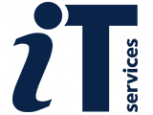Manual testing
Quality is a vital aspect of software systems, and manual testing continues to be an important technique for maximizing this. In today's software development processes, everybody in the team owns quality - including developers, managers, product owners, user experience advocates, and more.
Team Services and Team Foundation Server provide rich and powerful tools everyone in the team can use to drive quality and collaboration throughout the development process. The easy-to-use, browser-based test management solution provides all the capabilities required for planned manual testing, user acceptance testing, exploratory testing, and gathering feedback from stakeholders.
-
Planned manual testing. Manual testing by organizing tests into test plans and test suites by designated testers and test leads.
-
User acceptance testing. Testing carried out by designated user acceptance testers to verify the value delivered meets customer requirements, while reusing the test artifacts created by engineering teams.
-
Exploratory testing. Testing carried out by development teams, including developers, testers, UX teams, product owners and more, by exploring the software systems without using test plans or test suites.
-
Stakeholder feedback. Testing carried out by stakeholders outside the development team, such as users from marketing and sales divisions.

Holistic approach to manual testing, types of manual testing, and personas involved
You must install the Test Manager extension to use the advanced features of the Test hub.
Planned manual testing
Manual testing has evolved with the software development process into a more agile-based approach. Team Services and Team Foundation Server integrate manual testing into your agile processes; the team can begin manual testing right from their Kanban boards in the Work hub. Teams that need more advanced capabilities can use the Test hub for all their test management needs.
Manual testing from the Kanban board
Get started with manual testing easily using the Kanban board in the Work hub. Add, view, and interact with test cases directly from the cards on the Kanban board, and then progressively monitor status directly from the card. Developers and testers can use these rich capabilities to simplify maximizing quality within their teams. In Team Services, you need just Basic access to use these features. See more at Add, run, and update inline tests.

Manual testing in the Test hub
The Test hub in Team Services and Team Foundation Server provides a rich test management solution for teams that need advanced manual testing capabilities. The Test hub includes all the capabilities required for the testing lifecycle - including test planning, authoring, execution, and tracking. Get started using the advanced manual testing features with the Test Manager extension.
Test planning
Create and manage test plans and test suites for your teams with ease. Create static suites, requirement-based suites, or query-based suites. Export and share the test plans and test suites with your team. See more at Create test plans

Test authoring
Create multiple test cases in one operation, or easily add existing test cases to a test suite. Assign single or multiple testers to execute the tests. View test results and references to a test case across test suites. See more at Create test cases.

Testing web applications
The Test hub provides a browser-based test runner to run tests for your web apps. Mark test steps and test outcomes as pass or fail, and collect diagnostic data such as system information, image action logs, screen recordings, and screen captures as you test. Bugs filed during the tests automatically include all the captured diagnostic data to help your developers reproduce the issues. See more at Run tests for web apps.

Testing desktop apps
Test your desktop apps with Microsoft Test Runner client, which is part of Microsoft Test Manager. Use the Test Runner client to collect all the basic diagnostic data such as system information, image action logs, screen recordings, screen captures, and event logs as you test. In addition, use Microsoft Test Manager to collect advanced diagnostic data such as code coverage, IntelliTrace traces, and test impact data. See more at Run tests for desktop apps.

Test tracking
Quickly configure lightweight charts to track your manual test results using the chart types of your choice, and pin the charts to your dashboard to easily analyze these results. Choose a retention policy to control how long your manual testing results are retained. See more at Track test status.

User acceptance testing
User acceptance testing (UAT) is a key factor in software development that ensures the value requested by customers is being delivered by the engineering team. Team Services and Team Foundation Server include capabilities and tools to manage user acceptance testing. Quickly create UAT plans and suites, and invite multiple testers to execute these tests using test artifacts provided by the engineering team. Easily monitor UAT progress and results using lightweight charts. See more at User acceptance testing.

Exploratory testing for everyone
Maximizing quality in modern software development processes is a shared responsibility between developers, managers, product owners, user experience teams, and more. Collaborative testing processes and tools are the key factors in driving quality in these scenarios. Team Services and Team Foundation Server provide a lightweight, browser-based extension called the Test & Feedback extension, which enables everyone to contribute to the quality of your web apps. See more at Exploratory test and submit feedback directly from your browser.

Stakeholder feedback
Seeking feedback from stakeholders outside the development team, such as marketing and sales teams, is vital to develop good quality software. Using Team Services and Team Foundation Server, developers can request feedback on their user stories and features. Stakeholders can respond to feedback requests using the browser-based Test & Feedback extension - not just to rate and send comments, but also by capturing rich diagnostic data and filing bugs and tasks directly. See more at Request stakeholder feedback and Provide stakeholder feedback.




